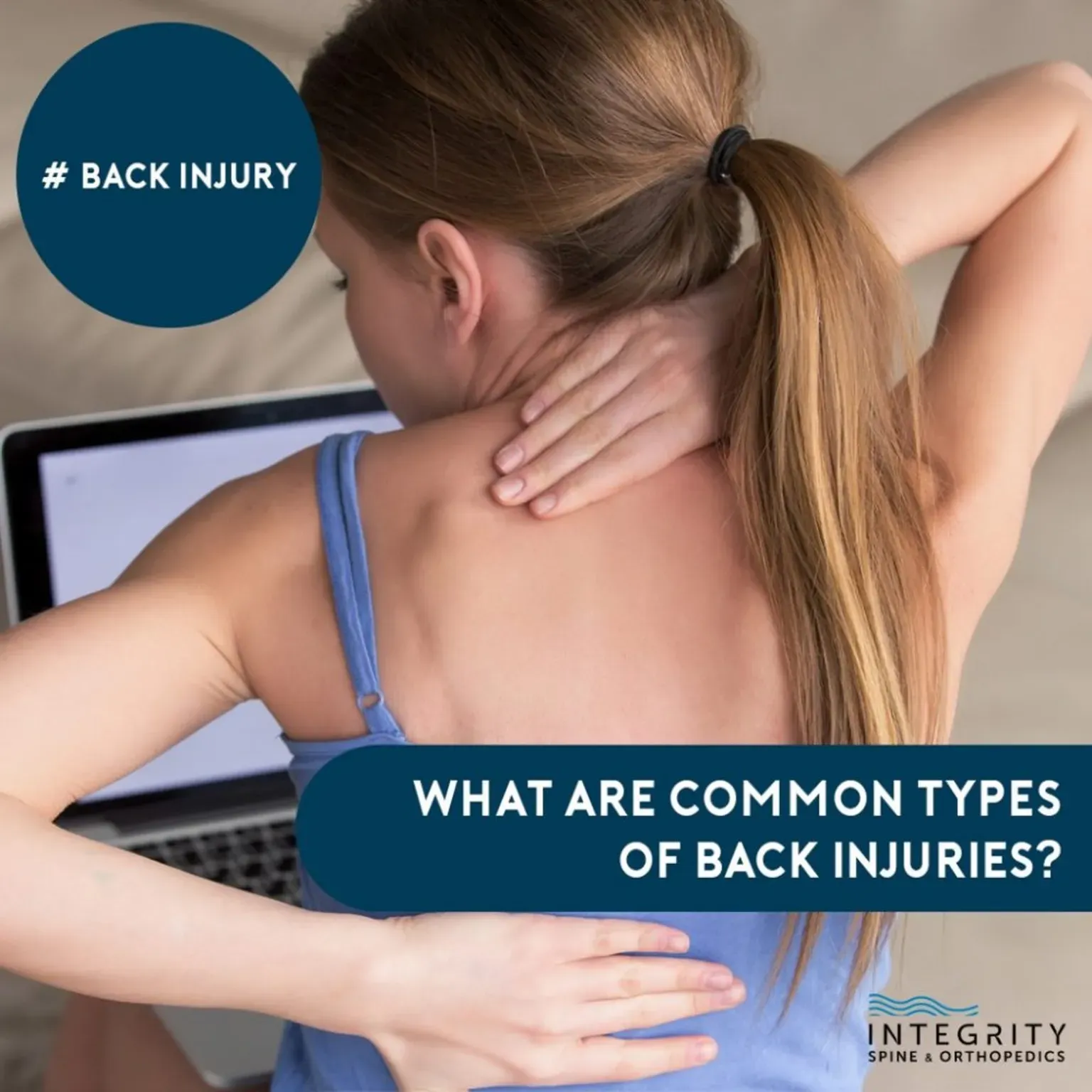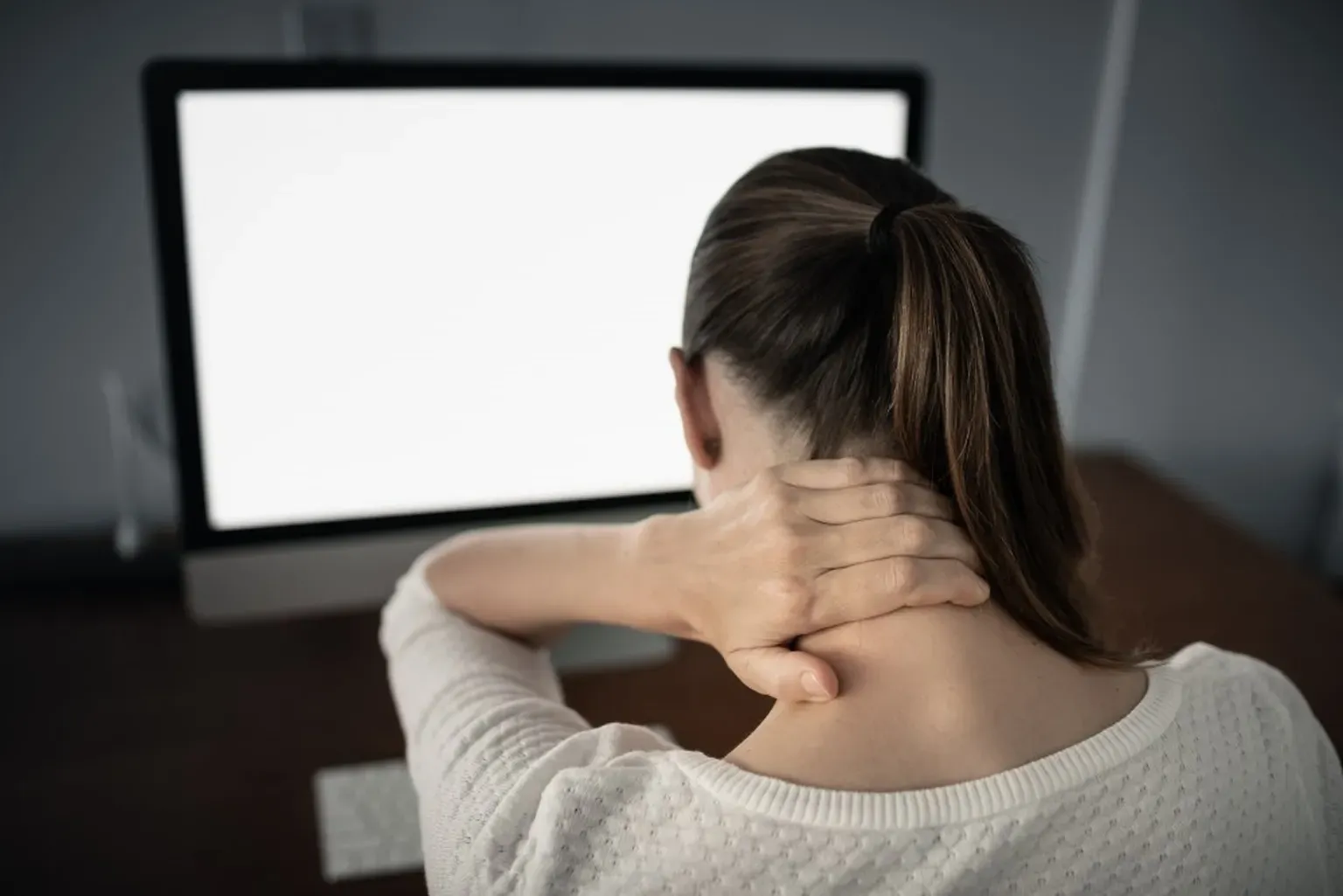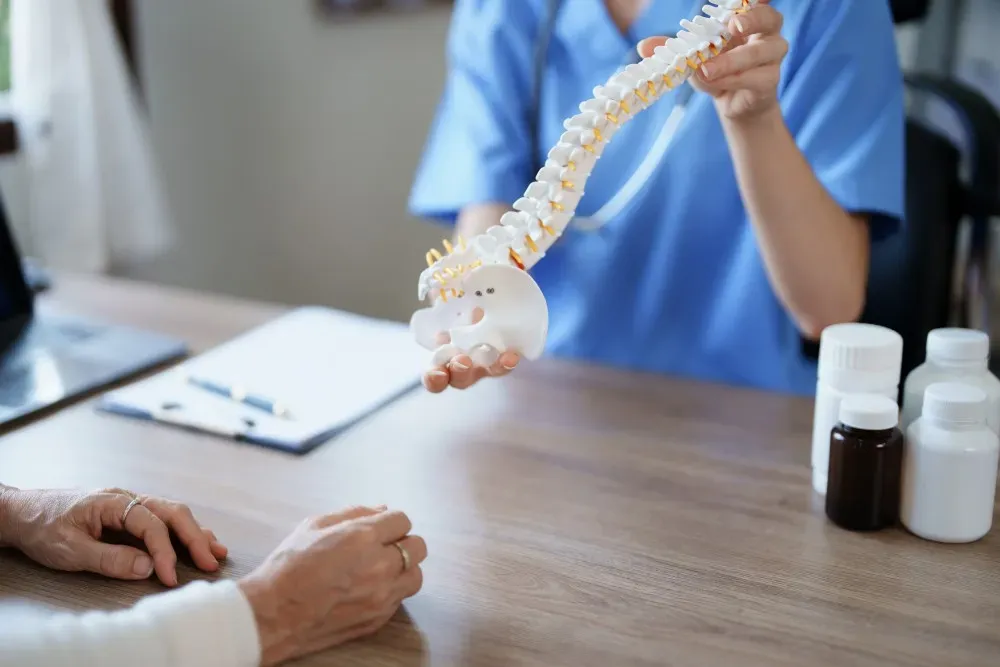Neurosurgery & Orthopedic Surgeons in Jacksonville

What Are Common Types of Back Injuries?
A back injury can significantly disrupt your normal life. Back pain and injuries are a primary reason for missed work, missed school, doctor’s visits, and disability in the United States.
A back injury can significantly disrupt your normal life. Back pain and injuries are a primary reason for missed work, missed school, doctor’s visits, and disability in the United States. Suffering a back injury often leaves you unable to sit for long periods at work, exercise, play sports, or move throughout your day normally.
There are several types of injuries that affect the soft tissues, joints, bones, and nerves that make up the back. Keep reading to learn more about four common back injuries.
1. SOFT TISSUE INJURIES
Soft tissue sprains and strains are two of the most common back injuries. A sprain occurs when ligaments overstretch or tear, while a strain occurs when muscles or tendons overstretch or tear.
Common causes for sprains and strains include:
- A traumatic injury. A fall, car accident, sports accident, sudden twist, or direct blow can damage and stretch the soft tissues in the back.
- An overuse injury. Repeated motions from lifting weights or playing sports can place stress on soft tissues and cause them to tighten and stretch.
Symptoms of a sprain or strain include back pain, tightness or stiffness, muscle spasms and difficulty moving. Soft tissue injuries are usually treatable with self-care at home. Rest, avoiding painful activities, and applying heat and ice effectively treat the majority of sprains and strains.
2. HERNIATED DISCS
A herniated disc is another common back injury. The spinal bones are supported by strong, flexible intervertebral discs that provide cushioning, absorb shock and aid with spinal movement. Each disc is made of a soft, jelly-like nucleus surrounded and protected by a tough outer ring of ligaments. A herniated disc occurs when a tear in the outer ring causes the nucleus to push through the disc and into the spine.
A herniated disc can be caused by:
- Wear and tear. As we age, spinal discs stiffen, flatten, dry out and form tiny cracks. The supportive ligaments weaken, causing the disc to slip or bulge out of place. Repeated pressure from daily wear and tear is enough to cause a degenerating disc to herniate.
- A traumatic injury. A herniated disc can occur suddenly from a traumatic incident like a fall, car accident, or sports accident that pushes the disc out of place.
Some people have no pain or symptoms from a herniated disc. But if disc material presses against nearby spinal nerves, you may experience back pain, weakness, numbness, or tingling. Common treatments include rest, medications, corticosteroid injections, and physical therapy. If the herniated disc is causing nerve pain and damage, minimally invasive spine surgery may be necessary to repair or remove the disc.
3. DEGENERATIVE INJURIES
The spine naturally degenerates and loses normal function and structure over time. Common degenerative conditions include:
- Spinal stenosis. Spinal stenosis occurs when the spaces within the spine narrow and tighten. A herniated disc, thickened ligaments, bone spurs or inflammatory injuries are common conditions that lead to narrowing of the spaces in the spine.
- Degenerative disc disease. Degenerative disc disease is a condition that describes pain and symptoms caused by deteriorating spinal discs. Degenerating spinal discs may crack, dry out, flatten, collapse or herniate with age, wear and tear.
- Arthritis. Arthritis affects the joints that connect vertebrae in the spine. Osteoarthritis develops when the cartilage covering joint surfaces erodes, causing joint damage and painful bone-on-bone friction.
Symptoms of degenerative spine conditions include back pain, stiffness, and loss of movement. If the spinal nerves are affected by degenerative changes, you may experience weakness, numbness and tingling in the arms or legs. Degenerative spine conditions are managed with a combination of medications, physical therapy, injections and lifestyle changes.
4. FRACTURES
Vertebral fractures are another common back injury. A fracture can occur from several causes, including:
- Osteoporosis. Osteoporosis is a bone disease that causes bones to become weak and brittle. If you have osteoporosis, even a mild stress from coughing or bending over can lead to a vertebral compression fracture.
- A traumatic injury. A fall, car accident or sports accident can cause a vertebral fracture.
The most common symptom of a spine fracture is pain that worsens with movement. Depending on the type of fracture you have, your treatment options may include bracing, traction or surgery.
WHEN TO SEE A DOCTOR
Back pain is incredibly common and can be brought on by something as simple as sleeping in an awkward position. How do you know when a back injury is significant enough to warrant a trip to the doctor’s office?
Call your doctor if you’re experiencing any of the following:
- Pain that lasts for more than a few weeks
- Pain that continues to worsen
- Significant pain that’s affecting movement, sleeping or daily activities
- Pain that spreads down an arm or leg
- Pain that’s accompanied by numbness, weakness or tingling in an arm or leg
It’s also a good idea to get checked out by your doctor if you have back pain following a fall, car accident, direct blow to the back or sports accident.
INTEGRITY SPINE AND ORTHOPEDICS TREATS BACK PAIN AND INJURIES
Don’t let back pain put you out of commission for too long. Whether you’re suffering from an acute injury or chronic pain, Integrity Spine and Orthopedics has the orthopedic care, pain management, sports medicine, and minimally invasive surgery services to help you to get back on your feet and back to doing the activities you love.
Call us today or reach out online to schedule your first appointment.




